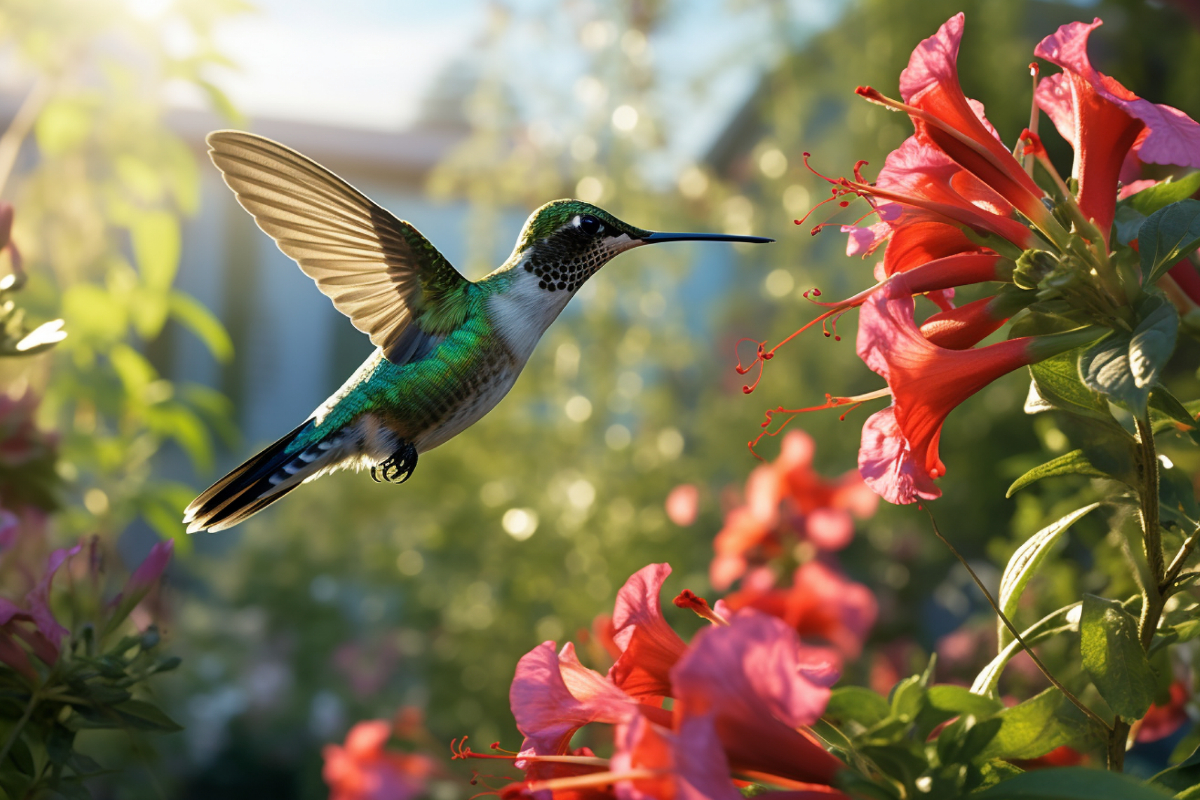Hummingbirds possess an insatiable craving for sugary nectar. Their slender beaks can often be seen delving into vibrant tubular flowers as they consume this sweet liquid fuel. But what makes nectar so crucial for fueling the dizzying array of aerial skills exhibited by hummingbirds?
In this blog post, we will explore the reasons why these tiny birds heavily rely on nectar. From the perfect balance of sugars to the unique method of nutrient extraction employed by hummingbirds, we will delve into their extraordinary addiction to nectar.
Nectar Packs the Perfect Energy Punch
Flowers produce nectar to attract pollinators like hummingbirds. This sugary secretion provides the ideal nutritional profile to meet the extreme energy demands of hummingbirds.
Sky-High Metabolism
Hummingbirds require a significant amount of calories to survive. In fact, they need to consume more than half their body weight in nectar each day. Their small bodies operate on a high metabolism that necessitates substantial energy intake.
In addition to basic survival, activities such as hovering, mating, long-distance migration, and evading predators require even more fuel. The concentrated sugar content of nectar provides the dense calories that hummingbirds rely on.
Balancing Glucose and Fructose
Nectar contains three essential sugars: glucose, fructose, and sucrose. The optimal ratio of glucose to fructose maximizes the rate at which hummingbirds can digest and metabolize these sugars for energy.
An excessive amount of glucose would overwhelm their digestive system. However, nectar produced by flowers pollinated by hummingbirds has adapted to provide the perfect proportion of each sugar specifically for these birds.
Extracting More Bang for Their Buck
In addition to offering an ideal nutritional profile, flowers also provide the most efficient fuel source for hummingbirds. Their specialized feeding adaptations enable them to extract the maximum benefit from every drop of nectar.
Built for Nectar Extraction
Hummingbirds possess tongues with forked tips that are perfectly designed for lapping up liquid. As they explore flowers, their long tongues unfurl to absorb nectar. Grooves on the tongue’s surface then channel the nectar back to the throat, allowing them to swallow up to 10 times per second. This unique anatomical adaptation ensures that no nectar goes to waste.
Minimizing Energy Expenditure
By hovering near flowers, hummingbirds minimize the energy expended in reaching their food source. This is in contrast to birds like chickadees, which must constantly land and take off again from branch to branch.
Rather than wasting calories foraging over a large area, hummingbirds conserve energy by focusing on flower clusters. This further optimizes the benefits derived from the rich sugar content of nectar.
Nectar Drove the Evolution of Hummingbirds
Scientists believe that hummingbirds originated in South America, where a wide variety of flowering plants provided reliable access to nectar.
Over millions of years, natural selection favored hummingbird traits that improved nectar extraction. An evolutionary arms race between plants and birds led to specialized beak shapes, tongue grooves, hovering ability, and more.
The ready availability of nectar ultimately facilitated the distinctive adaptations of hummingbirds. This allowed them to occupy evolutionary niches that were inaccessible to other birds, all thanks to their strong addiction to nectar.
Fueling Their Dazzling Lifestyle
With their skyrocketing metabolisms and extreme energy demands, hummingbirds rely on the optimal sugar ratios in nectar to power their nonstop activity.
Their unique anatomical tools enable them to capitalize on the generous liquid offerings of flowers. Therefore, the sweet taste of success explains why hummingbirds have such a strong nectar habit.
The next time you observe a hummingbird sipping nectar, remember that it is the fuel that drives their unparalleled mastery of the air. These mesmerizing tiny birds have evolved to extract the maximum benefit from the high-octane nectar provided by flowers.
